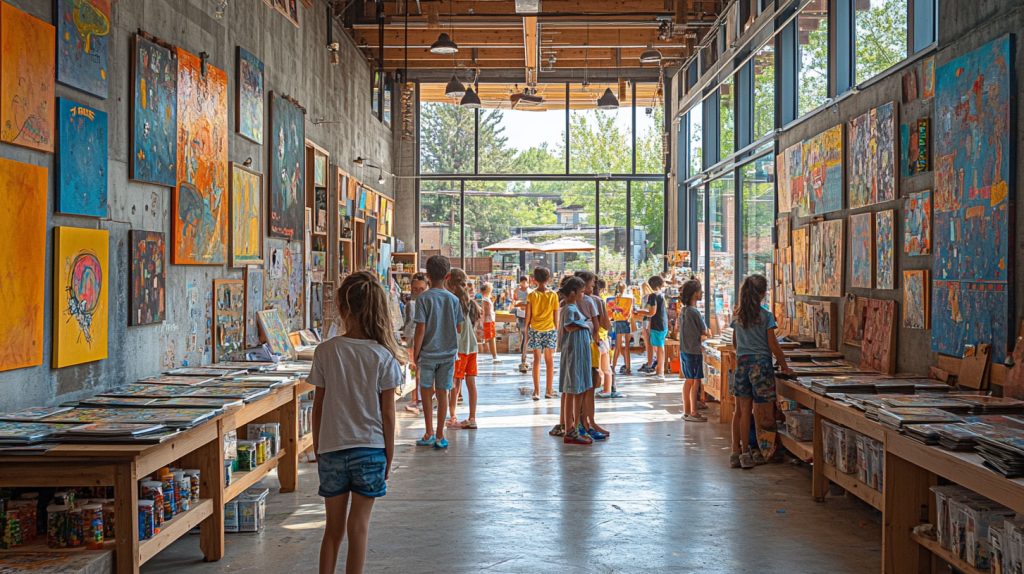
When people see children engaged in art, a common question arises: "Are they really learning?" The assumption that fun and learning are mutually exclusive persists, but research proves otherwise. True learning flourishes when students are engaged, empowered, and joyful—qualities inherent to the arts. This perspective is supported by Erica Halverson, a professor and researcher in curriculum and instruction, whose work uncovers the profound learning that occurs in youth arts programs.
Arts Education: A Catalyst for Engagement
Erica Halverson’s journey into arts-based learning is deeply personal. Growing up in the National Dance Institute under the mentorship of New York arts legend Jacques d’Amboise, she experienced firsthand how arts shape identity, teamwork, and joy. Later, as a designer of youth arts programs in Chicago, she observed a recurring phenomenon: students who were previously disengaged in classrooms came alive in art spaces, demonstrating newfound skills and enthusiasm.
This observation inspired her to explore the deeper mechanisms of learning through arts, leading her to the Learning Sciences field—a blend of psychology, cognitive science, and cultural anthropology. Halverson emphasizes that learning isn't solely cognitive; it’s rooted in social, cultural, and historical contexts.
The Four Pillars of Learning in the Arts
In her research, Halverson identifies four key practices that underpin learning in arts education:
- Representation: At its core, art involves translating ideas into tangible forms, such as a watercolor painting, a poem, or a scene in a play. This process mirrors how students learn across disciplines, helping them conceptualize and communicate complex ideas.
- Identity: Art-making allows young people to explore who they are and how they fit into their communities. By engaging in creative projects, students build personal narratives and connect with peers and mentors in meaningful ways.
- Creativity: Often misunderstood as a natural disposition, creativity is, in fact, a practice that can be nurtured. It involves innovative thinking and problem-solving, skills that are crucial in education and beyond.
- Collaboration: Art is rarely created in isolation. It demands teamwork, idea-sharing, and distributed cognition—where knowledge and tasks are shared among people and tools. This fosters a deeper understanding of interdependence and collective success.
Regional Contexts Shape Artistic Learning
Halverson’s research highlights the importance of local histories and cultures in shaping youth arts programs. Whether in the Urban Midwest, the Indigenous Southwest, the Texas-Mexico border, or the Bay Area, each region’s unique socio-cultural dynamics influence how art is taught and experienced. For instance, border communities blend cross-cultural traditions into their art forms, while urban areas reflect histories of industrialization and redlining in their creative expressions.
Beyond Attendance: Measuring Impact
Traditional metrics like attendance fall short of capturing the true success of youth arts programs. Halverson shares insights from arts leaders who define success as long-term engagement and personal transformation. One leader remarked, “I know I’ve been successful when a kid comes once, disappears for a year, and then returns, eventually becoming a mentor.” This cyclical journey reflects the lasting impact of arts education, even when it doesn’t align with standard measurements.
The Arts: A Pathway to Lifelong Learning
Ultimately, arts education equips young people with tools to represent ideas, explore their identities, innovate, and collaborate—skills that transcend the boundaries of the classroom. By centering learning on joy, creativity, and connection, youth arts programs not only foster academic growth but also prepare students to thrive as engaged and compassionate members of society.
As Halverson’s research and experiences demonstrate, the arts are not just a medium for expression; they are a powerful framework for learning, transformation, and community building.